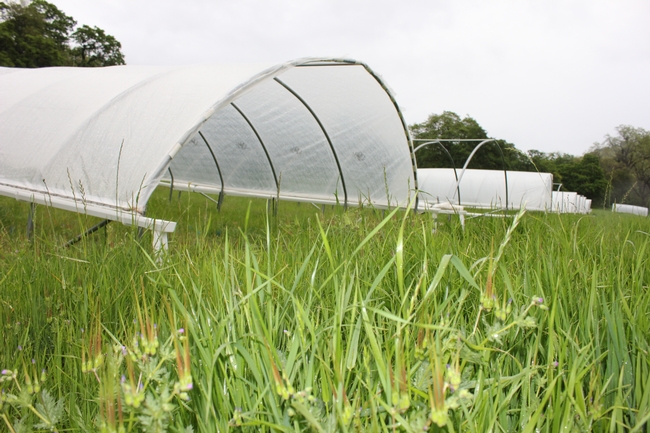- Author: Megan G Osbourn

Project Summary:
As precipitation more frequently departs from the historical range of variability, maintaining stability in forage production will be a critical management priority in Californian rangelands. A key mechanism that can lead to stability in forage production is compensatory dynamics, where plant functional groups respond differently to climate fluctuations (e.g.,taprooted forbs like Erodium tolerate drought, annual grasses are highly productive in non-drought conditions).
Researchers hypothesize that trade-off among functional groups should buffer the response of overall forage production to climate variability and better retain soil nutrients in dry-wet up cycles. The specific objectives are to: 1) quantify relationships among the fate and retention of nitrogen, soil moisture dynamics, and species compensatory dynamics in drought and non-drought conditions; and 2) incorporate these relationships into process-based models of nitrogen retention and forage production in rangelands.
This project will ultimately lead to more informed decision-making for ranchers interested in optimizing forage production and nutrient retention in the face of a highly variable future climate. It addresses an often overlooked but critical component to the stability of ecosystem processes: functional diversity of forage groups.
Researcher, Lauren Hallet explains the preliminary progress of this project in detail in the below video. Stay tuned for more information as samples are taken this spring.
Principle Investigator: Dr. Katherine Suding, ESPM, UC Berkeley




(No matter; just wondering!)
Here, plots simulating wet years have grasses only. (Wild oats? Medusahead? Soft chess? All of the above?)
Plots simulating dry years have forbs (erodium) only.
A third treatment has a mixture of both (ratio not given).
The plot views presented do not clearly show the appearances of the three treatments. A cursory glance tells one its mostly all grass. (Such aberrations "come with the territory", Lauren; you just have to go with the flow.)
Water provided manually in dry weather conditions does not simulate the environmental conditions of a wet year.
It is not stated whether this area, including plots, is left to grow "as is" from year to year.
Problematical is whether satisfactory extrapolation is possible from these experimental conditions to the more conventional situation of grazed pastures that are managed much differently, and where oft-repeated defoliations throughout the growing season is the norm. But that gives you opportunity to declare "More research is needed!"
It was delightful to listen to the background music provided by (?)a mountain jay(?). Didn't sound like a mocking bird, and it couldn't have been a meadow lark.